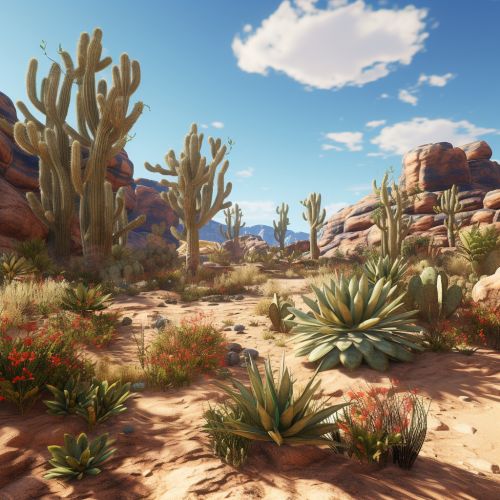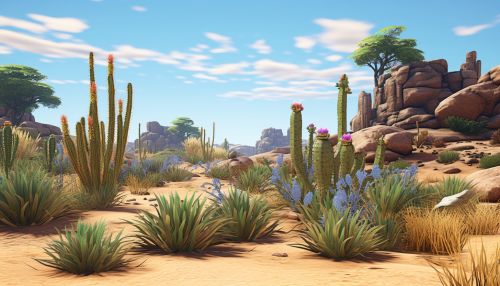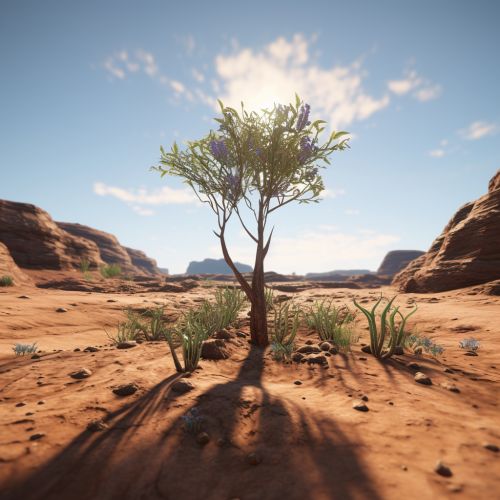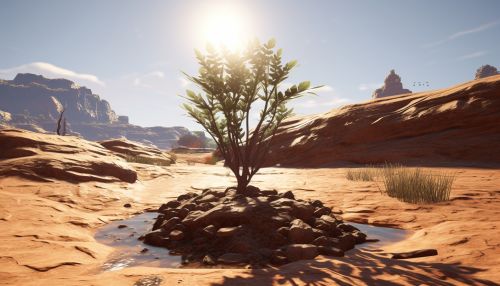Mechanisms of Water Transport in Desert Plants
Introduction
Desert plants, also known as Xerophytes, have evolved to survive in arid environments where water is scarce. These plants have developed unique mechanisms to transport, store, and conserve water, which are crucial for their survival. This article explores the various mechanisms of water transport in desert plants.


Water Absorption
Desert plants absorb water from the soil through their roots. The root systems of these plants are typically extensive and often go deep into the ground to reach water sources. Some desert plants, such as the Mesquite, have taproots that can extend over 50 feet into the soil to access groundwater.
Water Transport
Once absorbed, water is transported from the roots to the rest of the plant through a tissue called xylem. The process of water transport in plants, including desert plants, is primarily driven by a phenomenon known as transpiration. Transpiration is the evaporation of water from plant leaves, which creates a suction force that pulls water up from the roots through the xylem.
Water Conservation
Desert plants have evolved several strategies to conserve water. Many desert plants have small, thick leaves or needles, which reduce the surface area for water evaporation. Some plants, like Cacti, store water in their stems and leaves. Other plants, such as the Creosote bush, have a waxy coating on their leaves that helps to reduce water loss.
Adaptations for Water Transport and Conservation
Desert plants have developed a range of adaptations to enhance water transport and conservation. These include:
- CAM Photosynthesis: Many desert plants use a specialized form of photosynthesis known as Crassulacean Acid Metabolism (CAM). In CAM photosynthesis, plants open their stomata (small pores on the leaf surface) at night to take in carbon dioxide when temperatures are cooler and evaporation rates are lower. This helps to minimize water loss.
- Succulence: Some desert plants, such as cacti and succulents, have thick, fleshy tissues that store water. These plants can absorb and store large amounts of water during rare rainfall events, which they can use during dry periods.
- Leaf Modifications: Many desert plants have modified leaves to reduce water loss. For example, some plants have leaves that are reduced to spines, which minimizes the surface area for transpiration. Others have leaves that are covered with hairs or waxes that reflect sunlight and reduce evaporation.
- Root Modifications: Desert plants often have extensive root systems that can absorb water from a large area. Some plants have deep taproots that can access water from deep underground, while others have wide-spreading shallow roots that can quickly absorb water from rainfall.


Conclusion
The mechanisms of water transport in desert plants are complex and varied, reflecting the diversity of these plants and the harsh environments in which they live. These mechanisms, which include specialized forms of photosynthesis, unique structural adaptations, and water storage strategies, enable desert plants to survive and thrive in some of the world's most arid environments.
